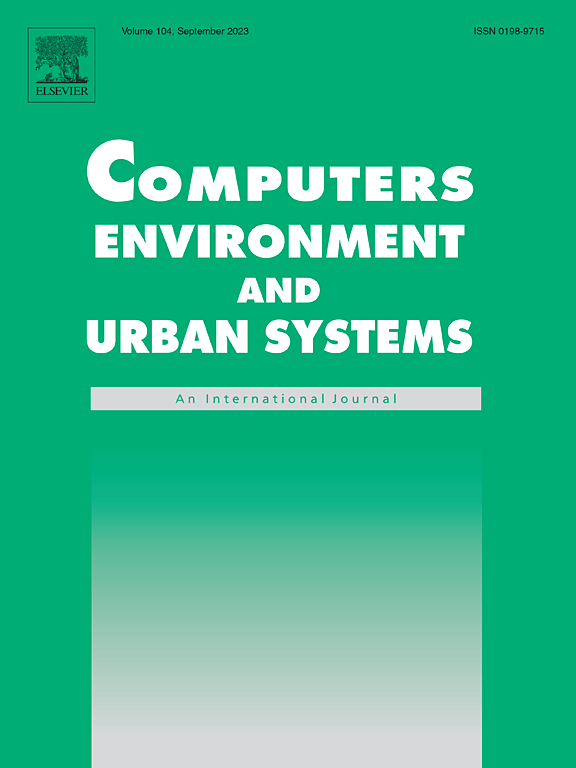Encoding experience: Quantifying multisensory perception of urban form through a systematic review
IF 8.3
1区 地球科学
Q1 ENVIRONMENTAL STUDIES
Computers Environment and Urban Systems
Pub Date : 2025-09-02
DOI:10.1016/j.compenvurbsys.2025.102349
引用次数: 0
Abstract
As cities become increasingly measurable and modeled, a new design paradigm is emerging — one that places human perception, emotion, and sensory experience at the center of urban analysis. Yet most planning frameworks and computational models continue to emphasize visual and spatial configuration alone, leaving out the full spectrum of how people engage with and feel in the built environment. This paper addresses that gap by systematically mapping how five sensory modalities — sight, sound, smell, touch, and taste — relate to urban form. A key innovation lies in reinterpreting Lynch’s seminal taxonomy of urban elements as a scaffold for organizing and analyzing multisensory perception. We synthesize findings across disciplines and identify sensing technologies capable of capturing the submodalities of each sensory domain, enabling a more complete understanding of how the built environment is experienced. While walkability serves as a representative domain throughout, the insights extend to broader efforts in urban design, infrastructure management, and experience-driven planning. By linking subjective human experience to objective spatial features, this work lays the foundation for new computational tools and humanistic metrics that can inform how cities are designed, maintained, and adapted.
编码经验:通过系统回顾量化城市形态的多感官知觉
随着城市变得越来越可测量和建模,一种新的设计范式正在出现——将人类的感知、情感和感官体验置于城市分析的中心。然而,大多数规划框架和计算模型仍然只强调视觉和空间配置,而忽略了人们在建筑环境中如何参与和感受的全部范围。本文通过系统地绘制五种感官模式——视觉、听觉、嗅觉、触觉和味觉——与城市形态的关系来解决这一差距。一个关键的创新在于重新诠释林奇开创性的城市要素分类学,将其作为组织和分析多感官感知的框架。我们综合了跨学科的发现,并确定了能够捕获每个感官领域的子模态的传感技术,从而能够更全面地了解建筑环境的体验方式。虽然可步行性是贯穿始终的代表性领域,但其见解扩展到城市设计、基础设施管理和体验驱动型规划的更广泛努力。通过将主观的人类经验与客观的空间特征联系起来,这项工作为新的计算工具和人文指标奠定了基础,这些工具和指标可以为城市的设计、维护和适应提供信息。
本文章由计算机程序翻译,如有差异,请以英文原文为准。
求助全文
约1分钟内获得全文
求助全文
来源期刊

Computers Environment and Urban Systems
Multiple-
CiteScore
13.30
自引率
7.40%
发文量
111
审稿时长
32 days
期刊介绍:
Computers, Environment and Urban Systemsis an interdisciplinary journal publishing cutting-edge and innovative computer-based research on environmental and urban systems, that privileges the geospatial perspective. The journal welcomes original high quality scholarship of a theoretical, applied or technological nature, and provides a stimulating presentation of perspectives, research developments, overviews of important new technologies and uses of major computational, information-based, and visualization innovations. Applied and theoretical contributions demonstrate the scope of computer-based analysis fostering a better understanding of environmental and urban systems, their spatial scope and their dynamics.
 求助内容:
求助内容: 应助结果提醒方式:
应助结果提醒方式:


